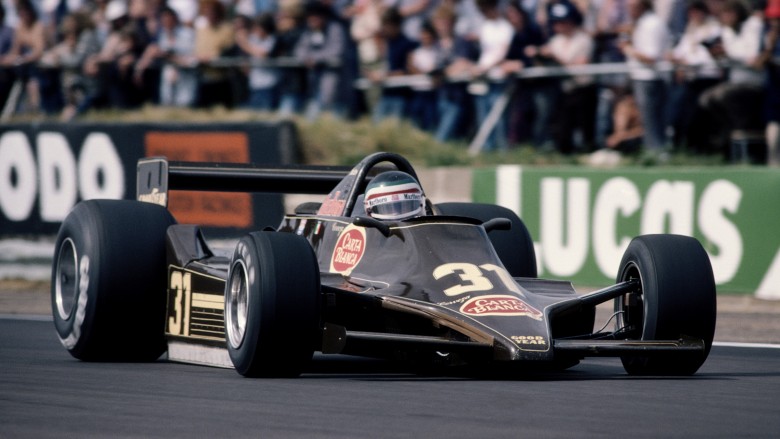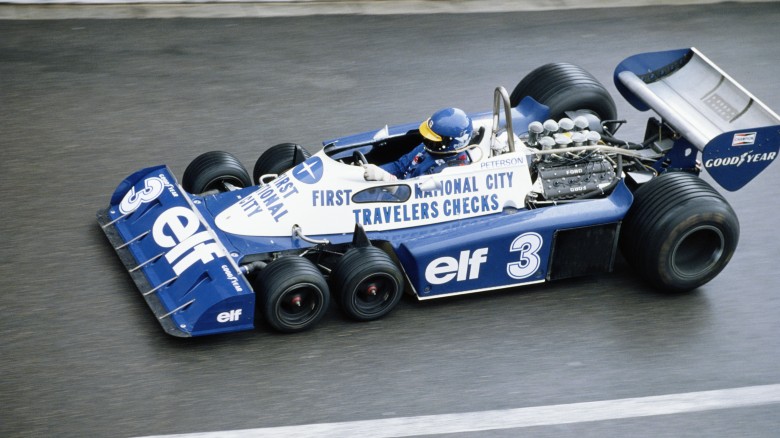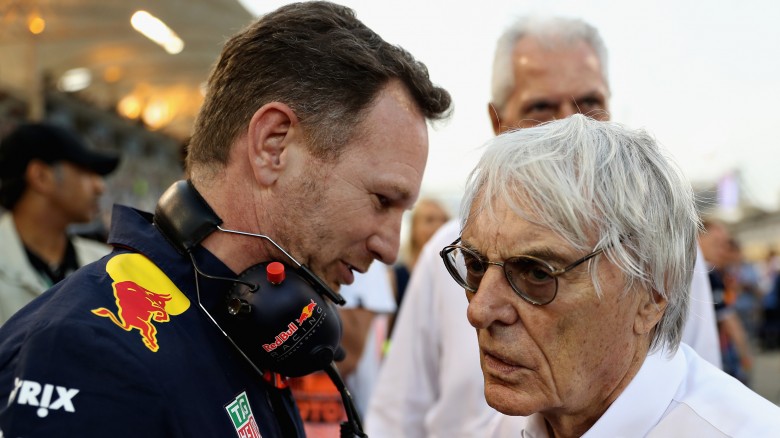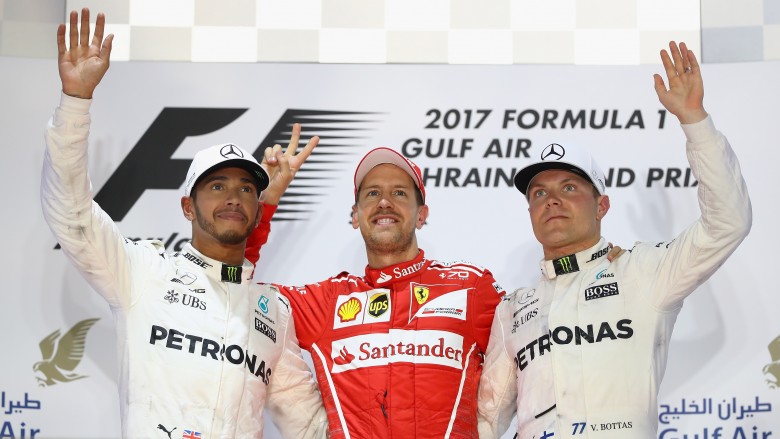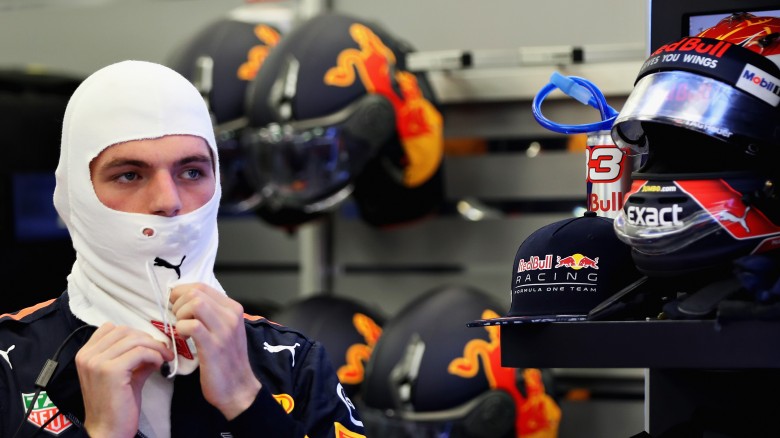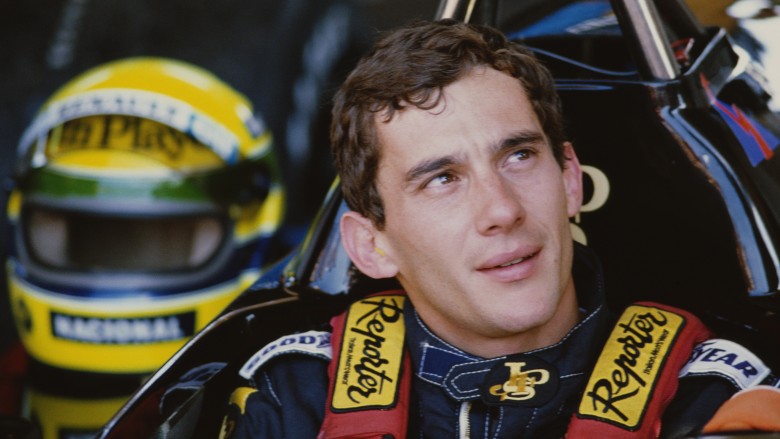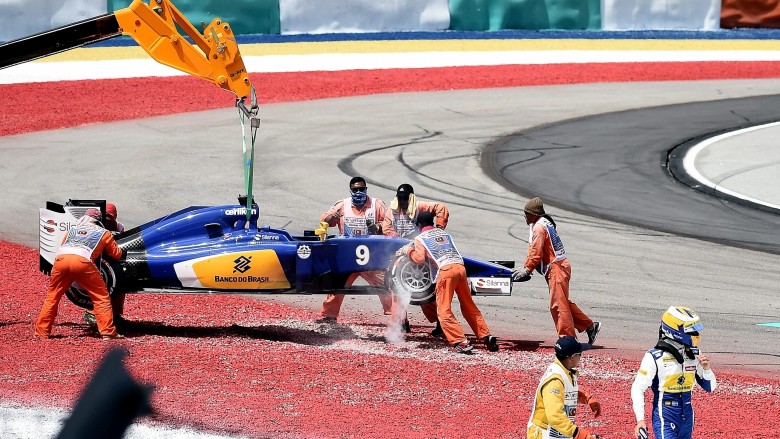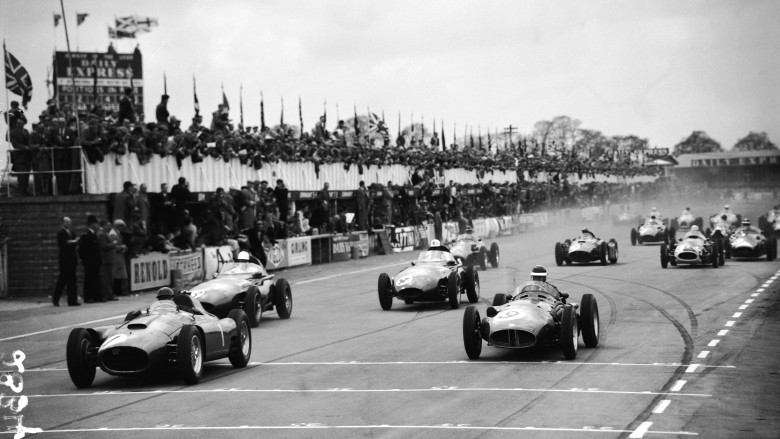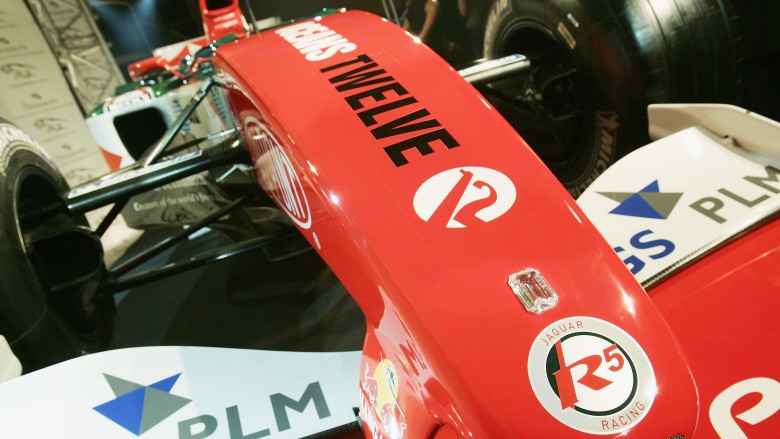The Untold Truth Of Formula 1
Formula 1 is the fastest, most extreme form of sanctioned, single-seat auto racing in the world. It's truly the sport of kings, where ultra-rich teams build expensive, low-flying death machines posing as automobiles, race in extreme conditions, and receive huge payouts. But the sport also has its share of secrets, from illegal craftsmanship to outright corruption.
The cars are more airplane than automobile
In theory, today's Formula 1 cars could drive upside down. Crazy, right? This is because, in modern F1, it's all about one thing: downforce. Downforce presses the tires forcefully down onto the track, allowing insanely tight, high-speed cornering. This downforce is created using the exact same principle that makes airplanes fly, with F1 cars also using wings—just in reverse. Just as the contours of an aircraft's wings create a difference in pressure, resulting in lift, so too do the contours of an F1 car's wings create a difference in pressure, resulting in "negative lift"—downforce.
Before 1970, engineers experimented with unrestricted wings on Formula 1 cars, resulting in some absolutely insane accidents. Afterward, rules were put into place, but they didn't stop such cars as the dominant "Black Beauty" Lotus 79 and the monstrous, fan-cooled BT46, which generated insane amounts of downforce, resulting in what rival teams found to be an unfair advantages. The BT46 was banned after only one race, in which it shredded the competition, and rules were implemented to limit "ground effects."
Formula 1 today is much more restrictive than it used to be, and car designers must work within a set of very strict rules to prevent their cars from flying away from the competition. Still, team engineers are always looking for loopholes and new inventions, which are almost always immediately smashed with the ol' ban hammer. You know what they say: if you're not cheating, you're not trying.
Some cars were just crazy
Take, for example, "The Thursday Car." McLaren's otherwise beautiful cigar-shaped orange racer with two obnoxiously stupid wings held way up in the air on struts. The M7C's front wing, raised well above the driver's head, was quickly banned—going down in the history books as "the guillotine," given the obviously dangerous possibility that such a front wing could, if jarred loose, slice a racer's head clean off. This McLaren M7C variation would win any beauty contest against the incredibly ugly Ligier JS5 from 1976, which must undoubtedly go down as the ugliest F1 car of all time. This fast monstrosity featured one bulbous, prominent air intake, in the form of a massive black oval above and behind the driver's head. Then, of course, there was the six-wheeled Tyrrell P34, for when four wheels just aren't enough.
Gone are the days of bizarre experimentation and absurd car designs. In today's Formula 1, every car looks more or less the same, with racing technology simply occupying an entirely different space than it did forty years ago. Our fingers are crossed that, someday, Mercedes rolls out some stupid-looking beast of a car ... but we won't hold our breath.
The sport is mired in corruption
In 2016, bottom-feeders Sauber and Force India put in a formal complaint with the European Union over how Formula 1 doles out its fat stacks of cash, with the sport receiving upward of $1 billion dollars every year from business deals and partnerships. Apparently, only 60 percent goes to the racing teams, with the majority and minority owners—CVC Capital Partners and Bernie Ecclestone, respectively—stuffing the rest into their already fat pockets. Ecclestone also made the call to sign individual deals with the richest teams, leaving the least competitive to fend for themselves. For example, Ferrari's individually arranged participation fee totals more than the bottom five teams' combined earnings! That's not exactly the kind of practice that promotes fair competition.
Many human rights activists aren't particularly fond of Formula 1's decision to hold a race in Baku, the capital of Azerbaijan, paving over the fact that their prisons are packed full of dissenters, activists, and anyone else who throws a wrench in the autocrats' well-oiled propaganda machine. Azerbaijan hosts a whole plethora of social and political problems, including the steady devaluation of their currency, regular protests, increasing poverty, and gross corruption—all of which Ilham Aliyev aims to "sportwash," according to the Panama Papers, by hosting a relatively boring and unspectacular grand prix. By accepting the Aliyevs' lube jobs, Formula 1 is—like it or not—complicit in Azerbaijan's corruption. Sure, money talks, but a whole slew of countries are eager to join the Formula 1 circuit, countries that ... you know ... don't jail anyone who speaks out.
Yes, when it comes down to it, Formula 1 simply races by their own rules. And Rule #1: make that money.
The richest teams dominate every race weekend
Look up "rich man's sport" in the proverbial dictionary, and it will surely be defined as Formula 1.
It's not uncommon for the top seven or so spots to be gobbled up by the sport's four richest teams on any given race. In fact, it happens quite a bit, with only the occasional unforeseen accident preventing Mercedes, Ferrari, Red Bull, or Williams from holding down the front of the pack every weekend—and often in that order. These teams have such a stranglehold on the sport that they get, according to The New York Times, tens of millions of dollars per season to simply show up on race day. Meanwhile, the sport's poorest teams regularly and repeatedly struggle to compete while battling for last place, with financial problems as severe as their race performances. The rich teams are so dominant, in fact, that they sell ready-made cars to smaller, less rich teams, with the likes of Mercedes, Ferrari, Red Bull, and McClaren arguing that this promotes competition and keep more teams involved in the sport.
This competitive and financial disparity makes Formula 1 one of the most lopsided sports in the entire world, while also paying out some of the highest rewards. "The difference between the front teams and the back teams is too big," Manor racing director Dave Ryan told The New York Times. Ryan acknowledges that the best teams deserve more money, "but I think the gap is just massive at the moment and it needs to be looked at in a slightly different manner," he states. "Massive" is probably the best way to describe the competitive gap, as even the most die-hard of Formula 1 fans are growing tired of the same lack of front-to-back competition, week in and week out.
Drivers are extremely fit and drink insane amounts of fluids
People tend not to think of drivers as the most fit of all athletes in the sports world, but Formula 1 pilots maintain insane physical shape.
Formula 1 claims its drivers are among the most conditioned athletes in the world, as the sport trumps all other forms of automobile racing in terms of the physical demands on a driver's body. In F1, drivers must be able to sustain upward of 3.5 g of cornering force and deal with the intense heat of the cockpit, on some intensely hot circuits, for the entire duration of a race—all while maintaining razor-sharp focus. It's not uncommon for drivers to lose six pounds during a race. That's why drivers are always subject to a weight-check upon completion.
Formula 1 drivers tend to favor cardiovascular workouts over strength training, since increased muscle mass means increased weight, which isn't good for shaving seconds off one's lap time. Swimming, running, and cycling tend to be the most common forms of exercise, though drivers also have specifically designed rigs that develop the most important muscles of all: the neck and chest. Because the G-forces present when turning an F1 car can make the driver's helmet and head weigh more than five times its actual weight, strong neck muscles are of vital importance. Also crucial are a driver's arms and core, as steering one of those low-flying aircraft over the course of a race is pretty intense. Lastly, reaction time can mean the difference between a successful overtake or crashing out—or, in some cases, life and death—so drivers like to smack away at batak reaction boards to keep up their hand-eye coordination.
You might wonder how—if drivers can lose kilograms of fluid per race—they stay hydrated enough to not pass out? Interestingly, Formula 1 cars have drink bags attached to the side of the cockpit, with a tube leading into the driver's helmet. Instead of having to suck up the juices, one of the seemingly millions of buttons on the car's steering wheel pumps some hydration straight into the driver's mouth, generally on a longer straight stretch. And forget water! Drivers stick to a fairly strict regimen of isotonic fluid that replaces vital nutrients that water could never provide. Inside the cockpit, which can reach 122 degrees Fahrenheit, the hydration fluid gets nice and warm, apparently tasting like tea.
As pleasant as warm tea can be, we'll stick to a nice, cold adult beverage when watching Formula 1 races.
Too many drivers died in the '60s and '70s
Formula 1 is currently a dangerous sport. But it used to be a deathtrap.
"In the '50s," Robert Smith told BBC, "there wasn't a safety culture. It was just after the Second World War—people were used to the idea that people could die, and I think people found it almost acceptable." Indeed, safety simply wasn't a priority in Formula 1, with seat belts not even being required until 1972. Tracks, like the infamous Nurburgring Ring, were upward of 15 miles long, which meant getting a safety car out to an accident was a time-consuming affair—as racing legend Niki Lauda found out the hard way, burning alive in his car for more than an entire minute. Though Lauda survived and was able to continue his racing career, many were not so lucky. 29 Formula 1 drivers died racing in the 1960s, while 18 died in the 1970s. It wasn't until Ayrton Senna's tragic death, in 1994—before he'd even reached his prime—that safety became Formula 1's priority.
Now only Jules Bianchi's tragic death in 2015 represents an outlier in what's become a relatively safe sport. However, some feel the increased safety measures detract from the essence of the sport—that is, the looming prospect of death hovering over any mistake or human error. Former Formula 1 driver Anthony Davidson went on record to say that motorsports in general have lost their fear factor. Danger and the specter of death made F1 more exciting, but it's hard to say—with a clean conscience—that we'd rather more drivers die in today's F1.
The sport is a logistical nightmare
Imagine, for a moment, that it's your job to make sure all of your Formula 1 team's equipment makes it halfway across the globe for the next race—sometimes only one week following the last one. We're talking crates full of computers, multiple sets of tires, the ridiculously expensive and intricate cars themselves ... not to mention trade secrets and developments that must be kept under wraps. Sounds like a lot of responsibility, huh? Well, that's only the tip of Formula 1's logistical nightmare of an iceberg.
Every Formula 1 team travels roughly 100,000 miles per year. The problem isn't even necessarily moving the equipment as much as making sure everything runs smoothly on an incredibly tight schedule. All things considered, it's enough to make your head spin ... and crash into a wall.
Races taking place in Europe aren't such a big problem, as every current Formula 1 team is based out of the sport's home continent. Teams can just pack up all their goodies in decked-out, customized trucks and hit the road. Races on other continents—such as Australia and the Americas—pose a much greater problem, requiring chartered cargo planes loaded with specialized crates that take up almost every inch of available space. Sometimes, there isn't even enough time to fly all the stuff home between races, requiring even more work to fly two races' worth of equipment from one location to another.
The logistics behind Formula 1 are just absurd, and Formula1.com comically likens the entire process to a "medium-sized military campaign." Keep all that in mind the next time you're complaining about shipping your eBay crap to Brazil.
The first Formula 1 race was totally bizarre
The first world championship Formula 1 race was so bizarre that the race didn't even have one official title, going down as both the Grand Prix d'Europe and, because it was on British soil, the British Grand Prix. His Royal Highness King George VI showed up to watch the spectacle, as did Queen Elizabeth, Princess Margaret, and guests Lord and Lady Mountbatten. Surprisingly, this was the only time a reigning monarch ever showed up to a British motor race, including today. Royalty didn't only watch the race, however. Some took part, including the Thai Prince Birabongse Bhanudej Bhanubandh and a Swiss baron, Emmanuel 'Toulo' de Graffenried, both of whom failed to finish. Jazz musician Johnny Claes of Johnny Claes and the Clay Pigeons finished in 11th place, and one Alfa Romeo car pulverized an unlucky rabbit mid-race. The average age of the field was 39 years old, making them old geezers compared to today's average age of around 26.
All in all, the race was like some real-life version of Wacky Races—and we sometimes long for the bizarreness that made early Formula 1 so spectacular.
Jaguar once lost a $300,000 diamond
Formula 1 may be expensive, but even the world's most glamorous sport has its limits, like when Christian Klien crashed his Jaguar at the 2004 Monaco grand prix.
Embedded into the nose of Jaguar's cars was a pair of flawless diamonds, worth roughly $300,000 each—a publicity stunt to promote heist movie Ocean's 12. One can only assume this promotion was deemed a terrible idea from the very first lap of the sport's most prestigious race, when Klien crashed his green Jag into the Mirabeau corner barriers, involuntarily hoisting the precious gem out of its socket and, possibly, into one lucky spectator's pocket. Said the Austrian driver afterward, "That will be the most expensive drive I'll ever take around Monte Carlo."
As if anybody in the world's highest GDP-per-capita tax haven needed the extra cash.
